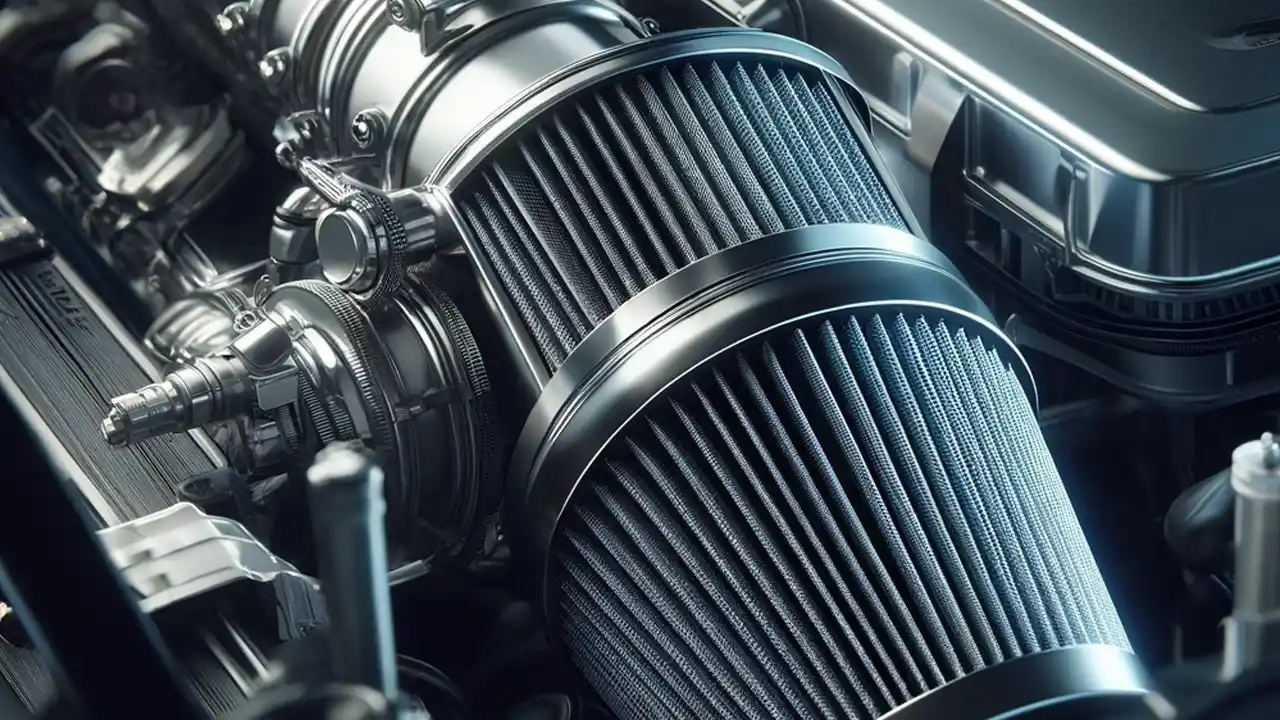Home »
Cold air intake (CAI) systems have attracted interest in automobile performance upgrades. Numerous auto enthusiasts and owners have been prompted by this claim to think about adding CAI systems to their cars. However, a more in-depth analysis is needed to pinpoint the exact effect of CAI on fuel economy. The workings of CAI systems are examined, along with the theoretical underpinnings of their alleged fuel economy impact, empirical data, and potential influencing elements of the systems. Does Cold Air Intake Increase Fuel Economy? In Simple, we can say yes, cold air intakes are engineered to draw air from outside the engine compartment, which ensures that cooler air is supplied to your engine. This improvement in air intake temperature can optimize the combustion process, potentially boosting your vehicle’s power and improving fuel efficiency
Understanding Cold Air Intake Systems
Understanding the basic concepts of cold air intake systems is essential before exploring the possible effects on fuel economy. An aftermarket upgrade meant to take the place of a vehicle’s factory air intake system is called a cold air intake. Improving the passage of colder air into the engine’s combustion chamber is its main goal.
The Cold Air Intake Mechanism
Conventional car air intake systems frequently pull air from the engine compartment, where the heat from the engine itself can cause temperatures to climb sharply. On the other hand, cold air intake systems usually pull air from the engine compartment’s exterior, which has a lower ambient temperature. The goal of CAI systems is to provide the engine with denser and colder air by accomplishing this.
A Cold Air Intake System’s Components
A bigger diameter intake tube, heat shields or insulating materials, and a cone-shaped air filter are the usual parts of a cold air intake system. Greater air can enter the engine thanks to the bigger diameter intake tube and the cone-shaped air filter, which offers greater airflow than the original filters. To maintain the temperature differential between the intake air and the surrounding environment, heat shields or insulating materials are frequently used to reduce the intake of hot air from the engine bay.
Theoretical Basis for Increased Fuel Economy
The purported increase in fuel economy associated with cold air intake systems stems from several theoretical considerations.
Improved Efficiency of Combustion
The possibility of increased combustion efficiency is one of the main justifications behind the idea of enhanced fuel economy. Because cooler air is denser, it has more oxygen molecules in it. This oxygen-rich air can maximize engine performance by facilitating more thorough fuel combustion when it is injected into the combustion chamber.
- Nearly 30% of UK Drivers Believe Car Tax Should Be Based on Mileage — Survey
- Why Planes and Boats Escaped the Luxury Tax But Cars Didn’t
- Australia’s Headlight Confusion: Authorities Warn Drivers After Viral $250 Headlight Rule Goes Wild Online
- 2025 Hyundai Venue Facelift Launched in India – Full Details, Variants, and Price
- Royal Enfield Bullet 650 Unveiled at EICMA 2025: A Classic Legend Returns
Diminished Engine Performance
The idea of decreased engine load is the subject of another hypothesized mechanism. The engine may have to work harder in conventional air intake systems to pull in air, particularly when the engine is operating at a high load. CAI systems can potentially lessen the stress on the engine by supplying a consistent flow of colder air, which would increase engine efficiency and ultimately improve fuel economy.
Reduced Heat Soak
Performance may suffer from heat soak, a situation in which engine parts continue to heat up even after the car has been shut off. Conventional air intake systems might pull in this heated air when the engine starts again, which could result in less efficiency. Cold air intake systems reduce the effects of heat soak and maintain constant intake air temperatures by pulling air from outside the engine bay; this could lead to an improvement in fuel efficiency.
Real-world Testing Challenges
Conducting real-world testing to assess the impact of CAI systems on fuel economy presents numerous challenges. Factors such as driving style, environmental conditions, and vehicle maintenance practices can influence fuel economy, making it difficult to isolate the specific effects of a single modification like a cold air intake system.
In conclusion, there are many facets and nuances to the subject of whether cold air intake systems improve fuel efficiency. Although the theoretical foundations point to possible advantages in terms of decreased heat soak, decreased engine load, and enhanced combustion efficiency, the practical data is still equivocal. It is difficult to determine the true effect of CAI systems on fuel economy because of several factors, including inconsistent research study results, difficulties with real-world testing, and the dynamic nature of engine management systems. Furthermore, driving circumstances, maintenance routines, vehicle-specific variables, and regulatory considerations may all have an impact on how successful CAI systems are. Therefore, even though cold air intake systems could improve performance in some cases, automobile owners should install them carefully and have reasonable expectations about how they might affect fuel efficiency.
